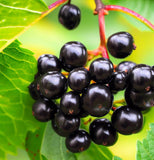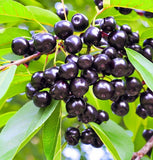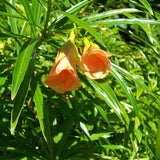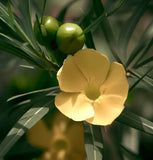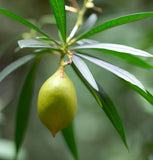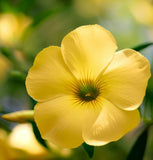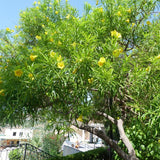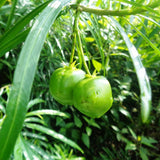Thevetia nereifolia (Yellow Oleander Thevetia peruviana)
Thevetia nereifolia (Yellow Oleander Thevetia peruviana) is a small to medium-sized evergreen tree that belongs to the family Apocynaceae. It is native to tropical regions of Central and South America but is also cultivated in various parts of the world for its attractive flowers and ornamental value.
Appearance: Yellow Oleander typically grows to a height of 10 to 20 feet (3 to 6 meters) and has a rounded or spreading crown. The tree has leathery, lance-shaped leaves that are arranged in whorls along the branches. The leaves are dark green and glossy, providing an attractive backdrop for the flowers. Yellow Oleander produces clusters of trumpet-shaped flowers that are typically bright yellow in color, although variations with orange or peach hues can also be found.
Toxicity: It is important to note that Yellow Oleander is highly toxic. All parts of the tree, including the flowers, leaves, and seeds, contain toxic cardiac glycosides. Ingesting any part of the plant can lead to severe health problems, including cardiac issues and even death. Therefore, caution should be exercised when handling or planting Yellow Oleander, especially in areas accessible to children or pets.
Flowering: Yellow Oleander is known for its abundant and long-lasting flowering. The flowers appear throughout the year in warm climates but are most profuse during the summer months. Each flower lasts for several days before fading, and new blooms continue to emerge, providing a continuous display of vibrant yellow flowers.
Landscape Use: Due to its attractive flowers and glossy foliage, Yellow Oleander is commonly used as an ornamental tree in gardens and landscapes. It can be grown as a standalone specimen tree, in mixed shrub borders, or in containers. However, considering its toxicity, it is important to plant it in areas where its presence can be monitored and controlled.
Cultivation: Yellow Oleander prefers full sun to partial shade and well-drained soil. It can tolerate a range of soil types, including sandy or clay soils. Regular watering is recommended, especially during the establishment period. Pruning can be done to shape the tree and remove any dead or damaged branches.
Given its toxicity, it is advisable to exercise caution when considering planting Yellow Oleander. If you have young children or pets or if you are unsure about handling toxic plants, it may be best to choose non-toxic alternatives for your landscape. It is always recommended to consult with local gardening experts or horticulturists for specific guidance on growing Yellow Oleander in your region.
Botanical Name : Thevetia nereifolia
Common Name : Yellow Oleander Thevetia peruviana
Height : 10- 12 ft
Spread : 5 ft
Germination Info : Germination info: Seed does not require a pre-treatment
Hardiness zone : 9-11
Average seed per ounce : Approx. 8

